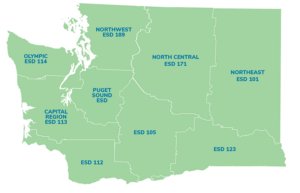All living things on our planet have adapted to ensure their survival under a given set of conditions. In order to survive, an organism must gather enough food or energy for growth, protect itself from harm, and reproduce. To obtain or store enough water for growth, plants in climates such as ours have developed various adaptations. Some plants have long roots that can tap into the groundwater stored deep below. Others have shallow roots that spread out wide and allow the plant to absorb the water from short bursts of rainfall. Some plants have organs for water storage. These organs allow the plant to hold water to be used at a later time. Other plants have made various leaf adaptations. For example, having light-colored leaves help keep the plant cool or cupped-shaped leaves help reduce water loss during transpiration.
The native plant communities of the Coastal Sage Scrub and the Southern Maritime Chaparral have adapted to live in our Mediterranean Climate here in San Diego. For this activity, students will make observations about plant size, leaf size, color, scent, and feel of these plants. As these observations are occurring, questions are posed and pondered on why these adaptations have helped these plants to survive in these areas and how they play an important role in the ecosystems within the park.
|
|
|
|
|
|
|
|
|
|
|
|
|
|
|
|
 Please select the district(s) your located in. Used this map for reference.
Please select the district(s) your located in. Used this map for reference.